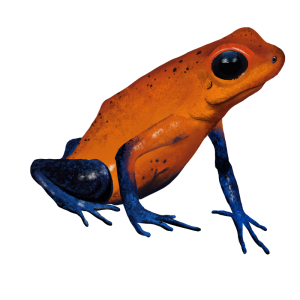The jaguar, king of the jungle
By Zoë Schreurs
The jaguar captures everyone’s imagination and has done so for ages, from North to South America. Did you know his name comes from the Guarani language of Indigenous tribes in Paraguay? It means, “He who can kill with 1 leap.” Not a bad observation, considering a jaguar can bite right through the shell of a turtle or the thick skin of a crocodile.
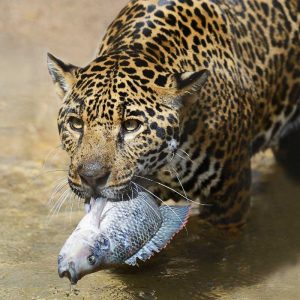 Thus, they can outwit prey up to 4 times their weight. Unlike other large cats, they bite their prey not in the neck or head, but in the back. They are such skilled swimmers that they can outwit larger prey even in the water.
Thus, they can outwit prey up to 4 times their weight. Unlike other large cats, they bite their prey not in the neck or head, but in the back. They are such skilled swimmers that they can outwit larger prey even in the water.
Jaguars are opportunistic hunters and will eat just about anything unfortunate enough to cross their path. As long as it’s meat. Deer are the equivalent of eating out once in a while, but monkeys, sloths, armadillos, anteaters, agoutis, rats, birds, fish and giant snakes are also in good taste….
The jaguar hunts mostly on the ground, by stalking and pouncing on its prey. Although it is also a good fisherman. It waits patiently on a rock and then knocks the fish out of the water with its paw.
All the good looks
The jaguar is the largest, strongest cat in the Americas. He uses his tail to keep balance when jumping. Although you know him as light brown with dark spots, there are also black varieties. Did you know that even then you can see spots in sunlight?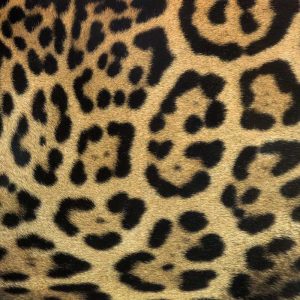
The jaguar can grow about 180 cm in length and weigh up to 100 pounds. They can live to be 12 to 15 years old in the wild.
Jaguar or leopard, how can you tell the difference? Well, not difficult! If you look at the spots in the fur, you’ll notice that the jaguar sometimes has black dots in the middle of its spots. Those spots are called rosettes, because they look like roses formed around a central spot. A leopard does not have that. As a matter of fact, the rosettes serve as camouflage. Moreover, the jaguar is built a bit more stout, but don’t tell him that, it’s a bit sensitive … And where jaguars love water, leopards will avoid it.
By the way, did you know that there also used to be a European jaguar? The species is now extinct, but a team of paleontologists from NCB Naturalis Leiden, Utrecht University, Natuurhistorisch Museum Rotterdam, and Oertijdmuseum Boxtel made some important finds in the province of Brabant in 2002. These included a molar, which after examination turned out to be from a European jaguar. The species was much larger than the American jaguar we know today as they weighed as much as 200 kg. They lived between 2 and 4 million years ago, when it was also subtropically warm and jungle-like here in Europe.
Ruler of the underworld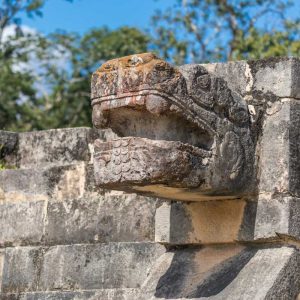
Thanks to their striking beauty and earlier distribution throughout the Americas, jaguars play an important role in indigenous cultures. The Maya revered the jaguar and had not one but several jaguar gods, demigods and transformers. For example, because the animal is nocturnal, they believed it controlled the underworld. Many sculptures, pottery pieces and other artifacts depict gods with features resembling jaguars. Jaguars were held in such high regard that only the ruling class was allowed to don the pelts. In this way, jaguar pelts became a symbol of authority.
At home in the tree
Jaguars live alone and only come together to mate. But this way, of course, they have little or no protection. Therefore, to sleep during the day, they prefer to find a high branch somewhere.
The average territory size of a jaguar is 2,000 acres. Their habitats include wet and dry forests, savannas and scrublands. Jaguars are good swimmers and climbers and depend on healthy freshwater systems and access to large amounts of territory to survive. Thus, they rarely go more than 500m from water.
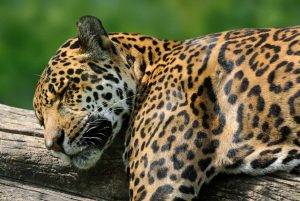 That 2,000 acres is not nothing, of course. And due to habitat loss and fragmentation, they are starting to run into problems quietly. They have already lost 50% of their habitat worldwide. Worldwide there are only about 15,000 jaguars left. Jaguars are not likely to move from one patch of rainforest to another. The jaguar is human-shy and prefers to stay in its familiar environment. But fragmentation creates the risk of inbreeding and increases the likelihood of genetic diseases.
That 2,000 acres is not nothing, of course. And due to habitat loss and fragmentation, they are starting to run into problems quietly. They have already lost 50% of their habitat worldwide. Worldwide there are only about 15,000 jaguars left. Jaguars are not likely to move from one patch of rainforest to another. The jaguar is human-shy and prefers to stay in its familiar environment. But fragmentation creates the risk of inbreeding and increases the likelihood of genetic diseases.
Protection of habitat
This is why the Adopt Rainforest Foundation’s goal is to protect 2,000 acres of rainforest in Costa Rica, connecting two important jaguar habitats. Making it easier for them to move around and thus exchange their genes and ensure their survival.
Help to protect the Jaguar’s habitat
